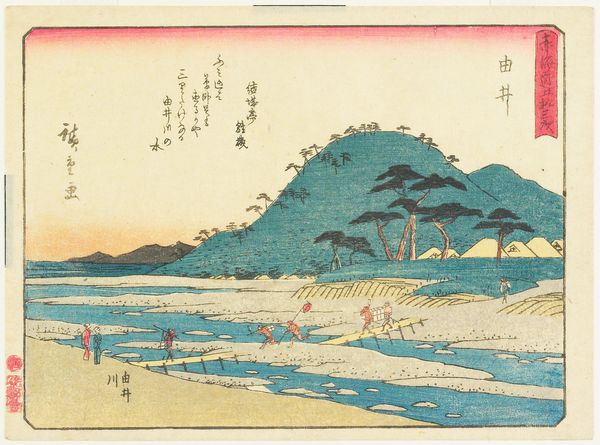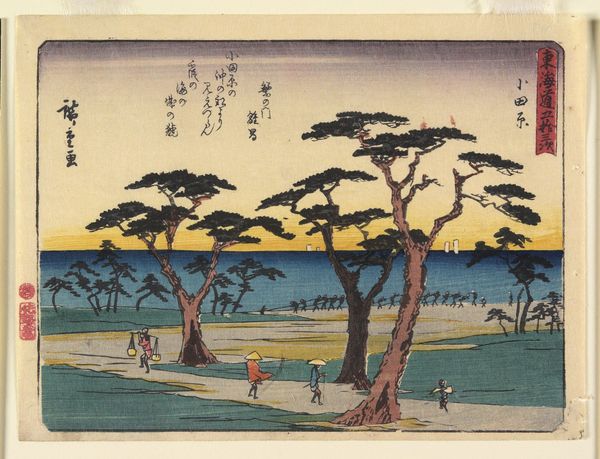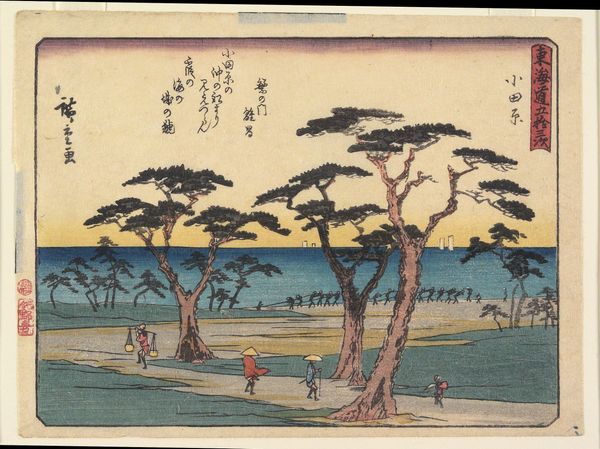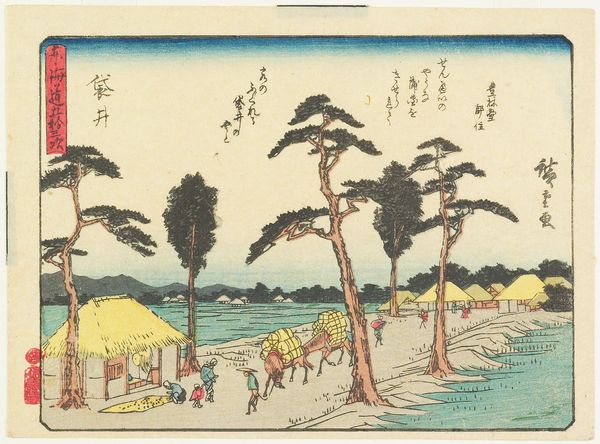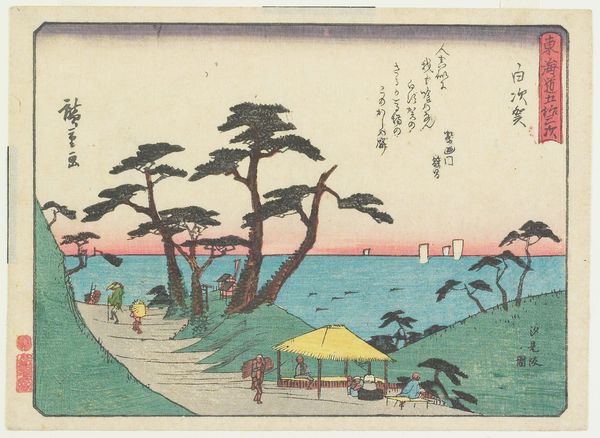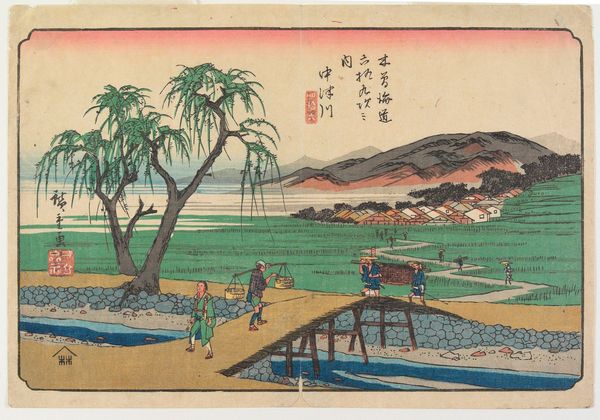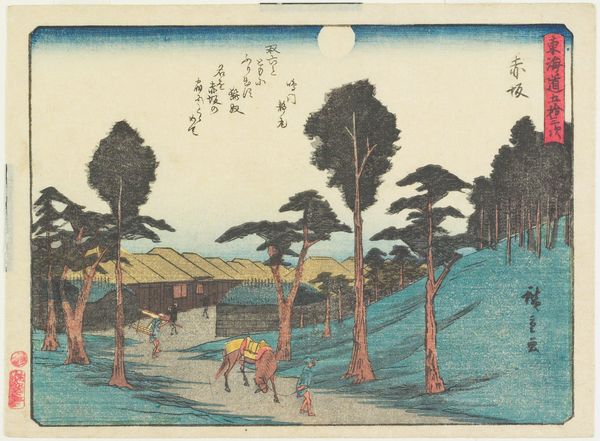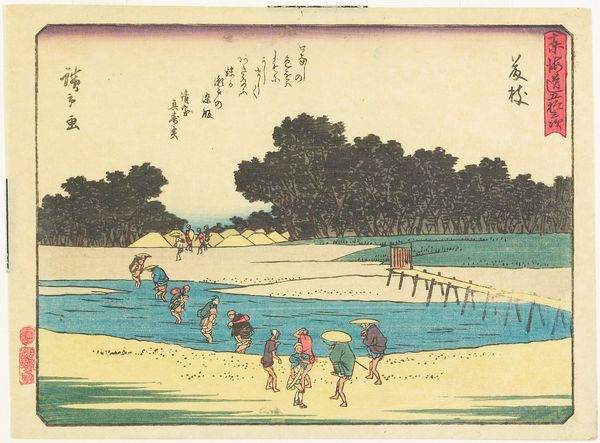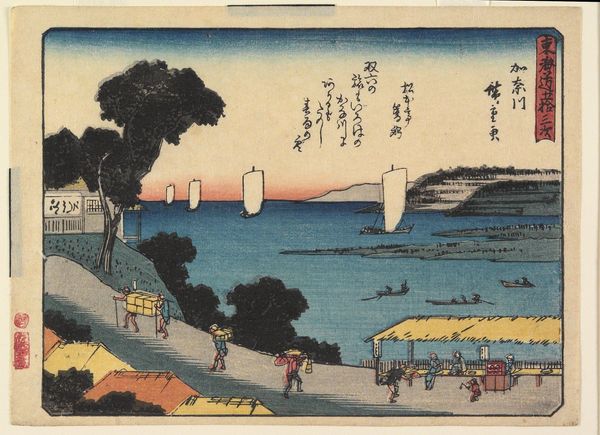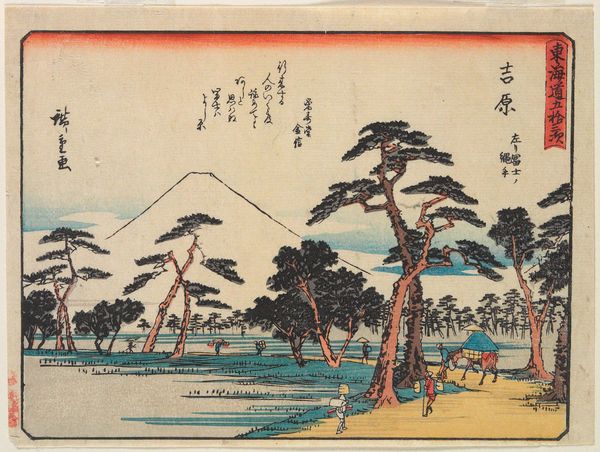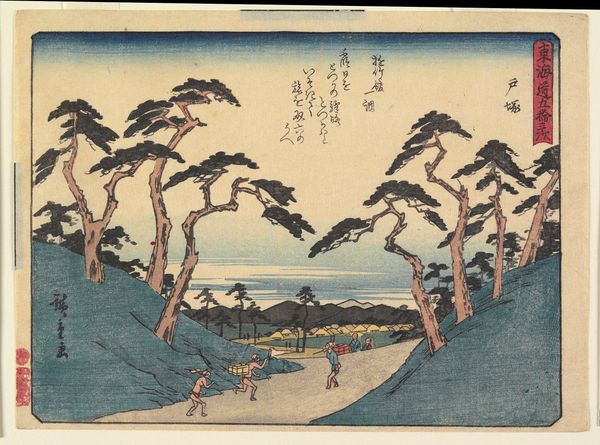
Dimensions: 6 1/8 x 8 1/4 in. (15.5 x 20.9 cm) (image)6 5/16 x 8 7/16 in. (16 x 21.5 cm) (sheet)
Copyright: Public Domain
This is "Mitsuke," a woodblock print by Utagawa Hiroshige, made in Japan during the Edo period. It’s part of a series called "Fifty-three Stations of the Tōkaidō," depicting scenes along the major road connecting Kyoto and Edo, now Tokyo. Consider the social context: travel was heavily regulated, and the Tōkaidō was crucial for both commerce and political control. Hiroshige’s prints weren’t just landscapes; they captured a carefully managed society on the move. Look at how the artist renders the figures, dwarfed by the scenery. This composition speaks to the individual's place within a larger, ordered world. The style of the image is Ukiyo-e, which translates to 'pictures of the floating world', which originally depicted the pleasure districts of Japan but later evolved to depicting other aspects of urban life and the countryside. To fully understand Hiroshige, we delve into travel diaries, government records, and the history of printmaking as a popular art form. The meaning of art is always tied to the social and institutional forces of its time.
Comments
No comments
Be the first to comment and join the conversation on the ultimate creative platform.


